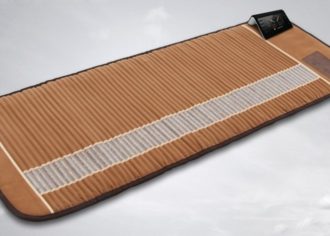In the realm of wellness, an ancient practice is gaining modern popularity – dry sauna therapy. The trend of using dry saunas for detoxification has captured the attention of health enthusiasts seeking holistic approaches to well-being. In this blog post, we explore the benefits of consistent dry sauna use, supported by findings from published journal entries and reputable sources.
- Detoxification Through Profuse Sweating: Published studies, such as the research conducted by Hannuksela and Ellahham (2001) in the American Journal of Medicine, emphasize the ability of dry sauna therapy to induce sweating, facilitating the elimination of toxins from the body. Sweating serves as a natural mechanism for expelling heavy metals and impurities, promoting a thorough detoxification process.
- Stress Reduction and Endorphin Release: The relaxation induced by dry sauna therapy is not merely anecdotal. A study published in the Journal of Alternative and Complementary Medicine (Manninen et al., 2015) highlights the positive impact of sauna sessions on stress reduction. The heat triggers the release of endorphins, contributing to a sense of calm and well-being.
- Enhanced Circulation and Cardiovascular Health: Findings from the Journal of Human Hypertension (Kauppinen, 1989) support the idea that the elevated temperature in dry saunas leads to blood vessel dilation, improving circulation. This enhanced blood flow contributes to better oxygenation of tissues, ultimately promoting cardiovascular health.
- Pain Relief and Muscle Recovery: The therapeutic benefits of dry sauna therapy extend to pain relief and muscle recovery. A study published in the International Journal of Biometeorology (Leppäluoto et al., 2008) highlights the positive effects on reducing inflammation and aiding in muscle recovery, making it a valuable adjunct to physical rehabilitation.
- Skin Health and Cleansing: Research in the International Journal of Environmental Research and Public Health (Paolucci et al., 2018) underscores the impact of sauna therapy on skin health. Sweating during sauna sessions helps eliminate impurities and dead skin cells, contributing to a clearer complexion and improved skin tone.
- Respiratory Benefits Supported by Scientific Evidence: The respiratory benefits of dry sauna therapy are substantiated by studies like the one in the European Journal of Applied Physiology (Bishop et al., 1999). The warm, dry air in saunas can have a positive impact on respiratory conditions, providing relief for individuals with asthma or bronchitis.
- Weight Loss and Water Weight Reduction: While not a substitute for a healthy lifestyle, research in the Journal of Science and Medicine in Sport (Scoon et al., 2007) suggests that sauna use can lead to temporary weight loss through the elimination of water weight. It is crucial to incorporate sauna therapy into a broader fitness plan for sustainable weight management.
As the trend of dry sauna therapy continues to flourish, scientific evidence supports its numerous health benefits. From detoxification and stress reduction to improved circulation and respiratory well-being, consistent use of dry saunas offers a holistic approach to health. Before embarking on a sauna routine, individuals are encouraged to consult with healthcare professionals, especially those with pre-existing medical conditions. So, step into the heat, backed by scientific insights, and embark on a detoxifying journey toward a healthier, more balanced life.

Dry Sauna Detox Therapy
The Professional BioMat 7000MX is a US FDA 510K Approved Medical Device for pain. It warms the body and improves cellular circulation through far-infrared rays, negative ion therapy and the superconducting properties of pure amethyst to penetrate and support healing at the cellular level.
